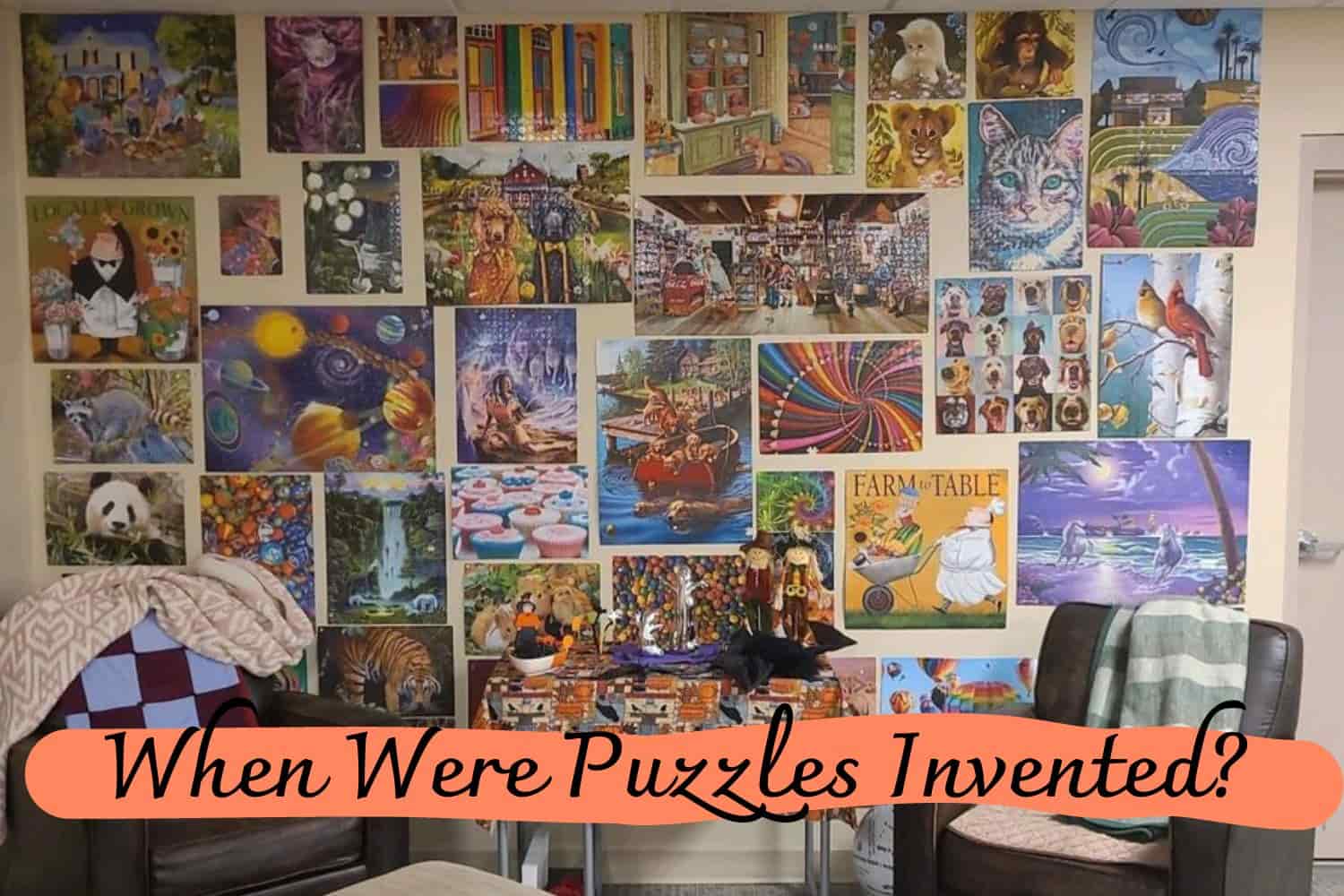Let’s take a journey back in time to explore – When were puzzles invented? And chart their popularity over the centuries. Learn more about one of our favorite games today!
When Were Puzzles Invented?
Have you ever stopped to think about – When were puzzles invented and how were they made? There is something deeply satisfying about the challenge and reward of puzzling, from creating a mosaic with pieces of a brightly-colored jigsaw to solving impossible Rubik’s cubes. But who created these clever amusements, and how long have we been trying our hands at them?
In the year 1760, an innovative mind by the name of John Spilsbury, hailing from London and working as a cartographer and engraver, introduced the world to a groundbreaking creation – the first-ever “jigsaw” puzzle.
We’re here today to unpack the origins of puzzles—from their invention to their myriad variations as we know them today. Join us as we explore the fascinating world of puzzly history!
The Invention of Puzzles: When Were Puzzles Invented?
Discover the fascinating origins of puzzles! John Spilsbury is credited with creating the first jigsaw puzzle in 1760, utilizing a marquetry saw.
These early puzzles, known as dissections, involved mounting maps on hardwood sheets and cutting along national boundaries, serving as valuable teaching tools for geography.
While cardboard jigsaw puzzles emerged in the late 1800s, they faced resistance to replacing wooden puzzles. Manufacturers believed that cardboard puzzles would be perceived as inferior, and wooden puzzles yielded higher profit margins.
The term “jigsaw” became associated with puzzles around 1880 when fretsawing techniques were adopted for cutting shapes. Additionally, other tools like jigsaws and scroll saws were used in the creation of jigsaw puzzles. The term “jigsaw puzzle” dates back to 1906.
During the Great Depression, jigsaw puzzles soared in popularity as they offered an affordable, durable, and recyclable form of entertainment. They transformed, becoming more intricate and appealing to adults.
These puzzles were also given away as promotional items and used in advertising campaigns, allowing customers to piece together an image of the promoted product.
However, after World War II, sales of wooden puzzles declined as paperboard jigsaws became more appealing with advancements in manufacturing processes and wage increases.
Fast forward to the COVID-19 pandemic and the stay-at-home orders, jigsaw puzzles experienced a surge in demand, reminiscent of the Great Depression. They became a popular choice for entertainment during these unprecedented times.
The Development of the Modern Jigsaw Puzzle

Have you ever wondered when the modern jigsaw puzzle came into existence? Today’s jigsaw puzzles have come a long way from their humble beginnings as teaching tools. Take a closer look and you’ll see some familiar puzzle features that have stood the test of time.
In the early days, the concept of interlocking pieces was introduced, albeit only on the edge pieces. This was done to save on labor costs, as the centerpieces simply sat alongside each other. Imagine how much easier it would have been to sort the edge pieces!
Fortunately, puzzle makers experienced a breakthrough in the 1880s with the advent of the treadle saw. This invention eliminated the need for hand-cutting all those pieces, making the puzzle-making process much more efficient.
During this time, puzzle boards transitioned from hardwood to plywood. Not only was plywood cheaper, but it was also easier to see through. The image would either be glued or painted onto the front, while the guides for cutting out the pieces were drawn on the back. If you’re fortunate enough to come across an antique puzzle, chances are you’ll still spot pencil marks on the back of the pieces.
By the late 1800s, puzzles made from cardboard began to emerge, primarily targeted at children. However, these cardboard puzzles were often perceived as lower quality compared to their wooden counterparts. Manufacturers cleverly downplayed the cardboard puzzles, knowing that wooden puzzles offered a much higher profit margin.
If you examine puzzles from this period, you’ll also notice that the designs became more intricate and of higher quality. Advances in lithographic printing allowed the artwork to be directly printed onto the wood, enhancing the visual appeal of the puzzles.
Why Did Jigsaw Puzzles Have Significant Growth in the 1800s?
In the late 1800s, the popularity of jigsaw puzzles experienced significant growth for three key reasons:
- The advancement of lithographic printing techniques allowed for high-quality prints to be applied to wooden surfaces. This resulted in sharper details and more vibrant colors, making jigsaw puzzles visually appealing.
- The introduction of plywood, a cost-effective alternative to solid wood, made it easier to cut intricate shapes for puzzles. This made puzzles more affordable and accessible to a wider audience.
- The invention of the treadle jigsaw further revolutionized puzzle-making. This tool allowed for the creation of even more complex shapes and made the puzzle assembly process faster. Puzzle makers were able to challenge puzzlers with increasingly challenging designs.
Conclusion
In conclusion, we have explored the enigmatic and ever-evolving history of puzzles. Since their first invention over 4,000 years ago, puzzles have captivated people around the world in many different forms.
From jigsaw puzzles to crosswords to escape rooms and more, there is sure to be something for everyone to enjoy. Puzzles open our minds to a wealth of possibilities and encourage engagement with others as we solve complex problems together.
There is some power and strength in being able to unravel an intricate puzzle on your own, but there is an even greater reward in having a group mind provide numerous perspectives that ultimately lead us toward the solution.
Whether you are looking for a challenge or just trying to pass the time with your family or friends, why not take on a puzzle today and find out what’s possible?
Thanks for reading our article When Were Puzzles Invented? If you want to know more information, visit our website here.
Read more:

